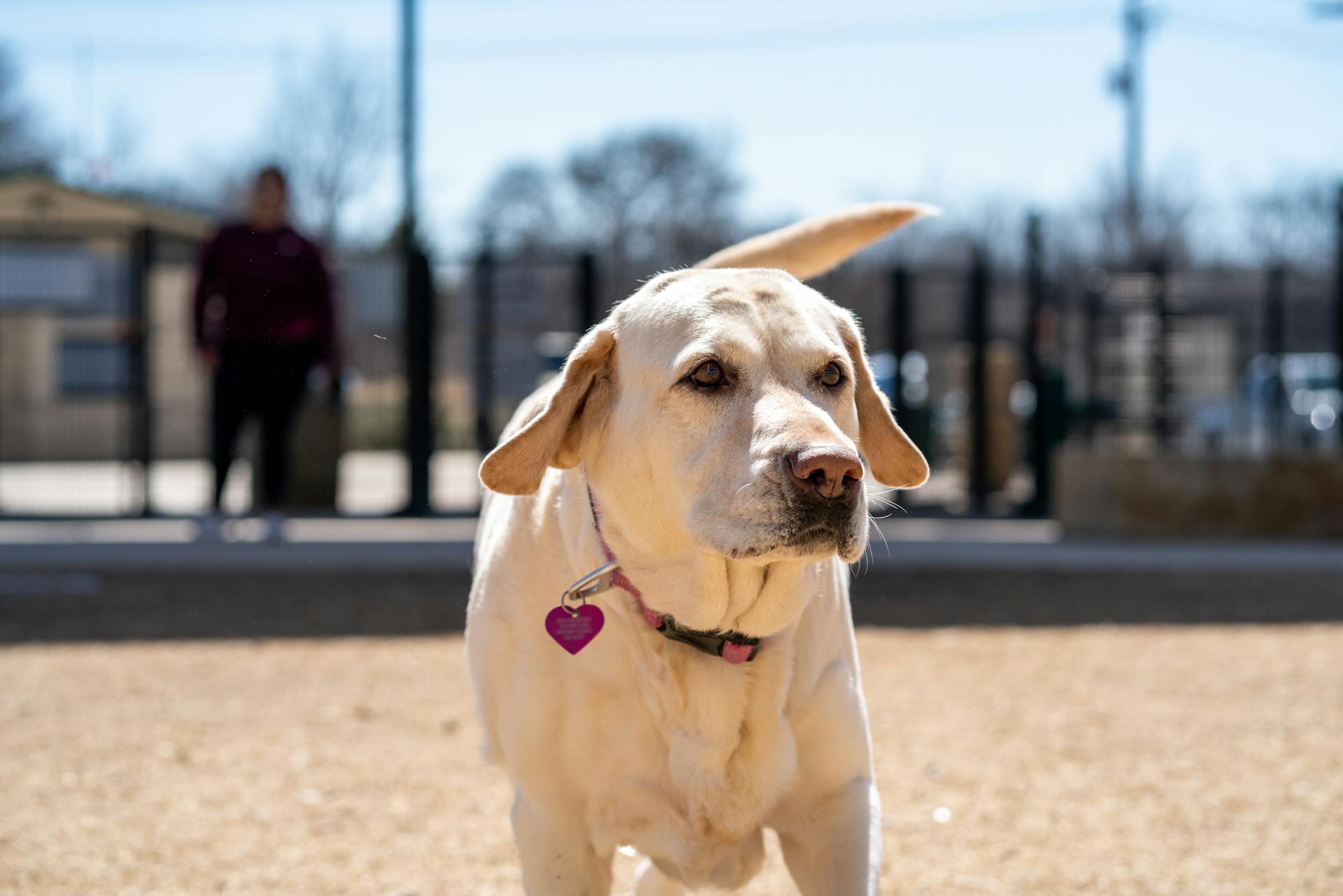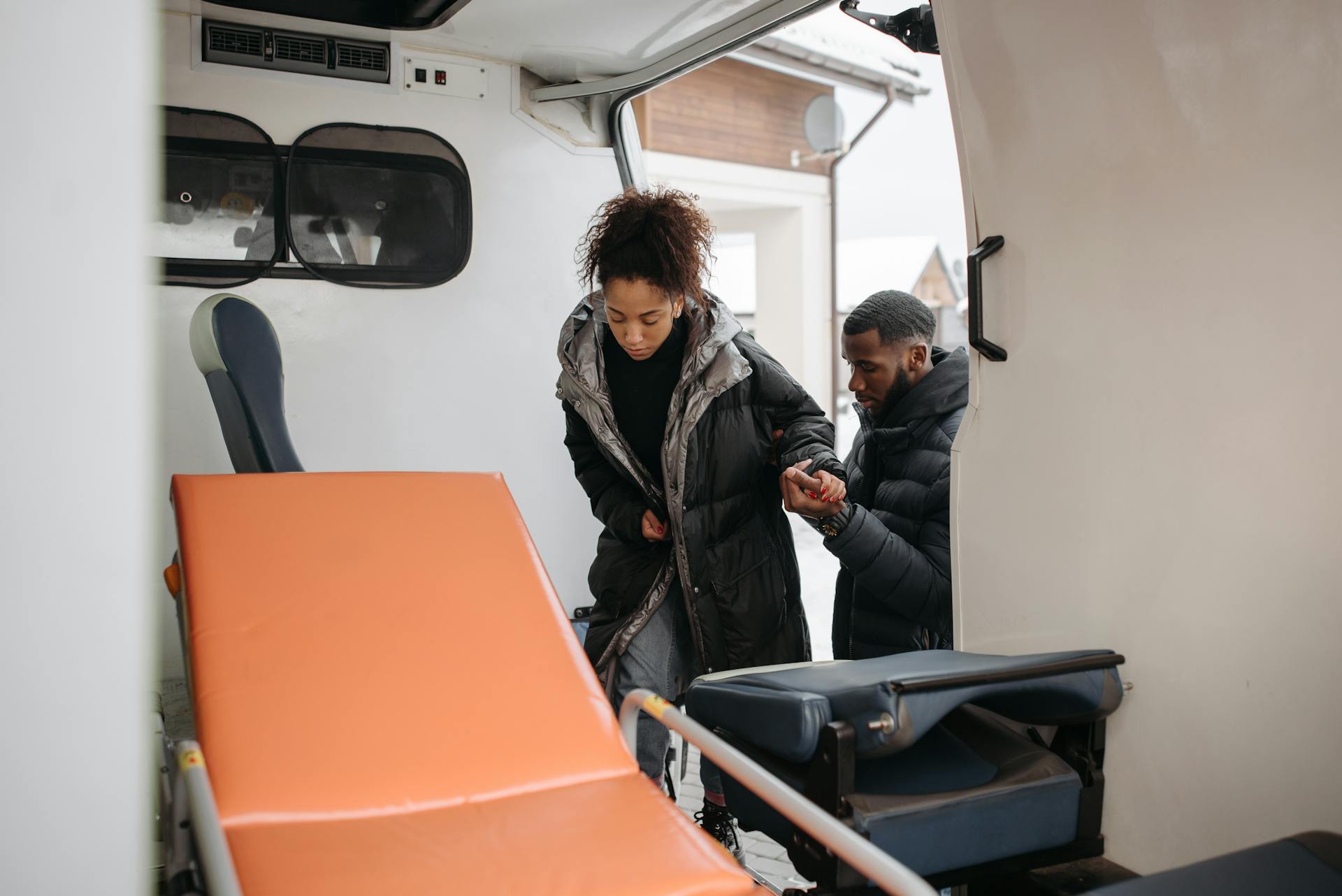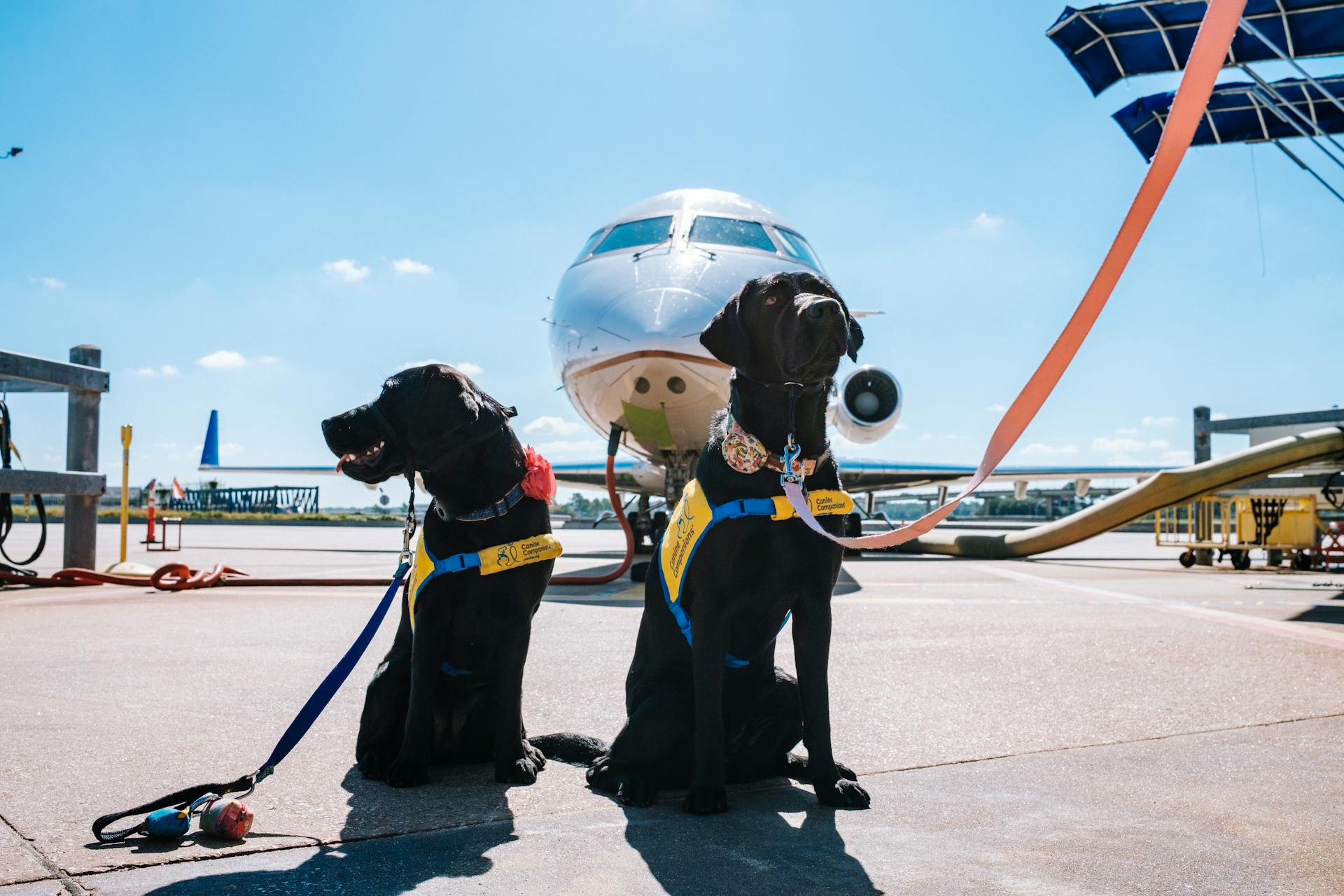
Service animals are often associated with dogs, but the law allows other animals to qualify as service animals.
Miniature horses, for instance, are covered under the Americans with Disabilities Act (ADA) and can be trained to assist individuals with disabilities. They are often used as service animals due to their small size and ability to navigate public spaces.
In the United States, the ADA defines a service animal as any animal that is individually trained to do work or perform tasks for a person with a disability. This broad definition includes a wide range of animals, not just dogs.
Readers also liked: Ada Assistance Animal
What Are Service Animals?
Service animals are specifically trained to assist individuals with disabilities, and they can be any breed or size of dog.
According to the Americans with Disabilities Act (ADA), a service animal is defined as a dog that has been individually trained to do work or perform tasks for a person with a disability.
Additional reading: Laws regarding Service Dogs

These dogs can be trained to assist people with a wide range of disabilities, including visual impairments, hearing impairments, mobility issues, and mental health conditions.
Service animals are not pets, and they are protected under the law. They are working animals that are trained to assist their owners in specific ways.
In the United States, service animals are allowed to accompany their owners in all public places, including restaurants, stores, and public transportation.
You might like: Public Access Test for Service Dogs
Types of ADA-Covered Animals
The ADA covers a variety of animals, not just any old dog.
Under the ADA, service animals are specifically defined as dogs that are trained to do work directly related to a person's disability. This includes dogs trained to detect psychiatric episodes, help with autism, respond to seizures, assist people who are blind or have vision problems, alert people with hearing loss or deafness, and even pull wheelchairs or help people balance or walk.
The ADA does not restrict service animals to particular breeds, size, or weight, as long as they are vaccinated according to state and local laws. But it's worth noting that a doctor's letter does not automatically qualify an animal as a service animal - it's the specialized training that makes the difference.
Here are some examples of service animals covered by the ADA:
- Psychiatric service dogs
- Sensory signal dogs
- Seizure response dogs
- Seeing-eye dogs
- Signal dogs
- Working dogs that pull wheelchairs or help people to balance or walk
Miniature Horses

Miniature Horses are a type of animal that can be covered under the ADA, just like service dogs. They're typically between 24 and 34 inches tall and weigh between 70 and 100 pounds.
To determine if a miniature horse can be accommodated in a facility, entities covered by the ADA use four assessment factors. These factors include whether the miniature horse is housebroken, under the owner's control, and can be accommodated in the facility, and whether its presence will compromise safety requirements.
If a miniature horse meets these criteria, entities must modify their policies to permit it. This means considering the horse's size, type, and weight, as well as any safety concerns.
Miniature horses are individually trained to do work or perform tasks for people with disabilities, making them an important part of the ADA's provisions.
Here are the four assessment factors to determine if a miniature horse can be accommodated in a facility:
- Whether the miniature horse is housebroken
- Whether the miniature horse is under the owner's control
- Whether the facility can accommodate the miniature horse's type, size, and weight
- Whether the miniature horse's presence will not compromise legitimate safety requirements
Animal Coverage

Under the ADA, only dogs can be considered service animals, and they must be trained to do work directly related to a person's disability. These dogs can be any breed, size, or weight, as long as they're properly vaccinated according to state and local laws.
The ADA specifically lists several types of service animals, including psychiatric service dogs, sensory signal dogs, seizure response dogs, seeing-eye dogs, signal dogs, and working dogs that pull wheelchairs or help people balance or walk.
The key factor is not the type of disability or the dog's breed, but rather the specialized training the dog has received. A doctor's letter or identification card does not automatically make an animal a service animal under the ADA.
If your disability and need for the service animal are obvious, the dog should be allowed to enter public spaces with you without any questions. If not, you may be asked two questions: do you require the service animal because of your disability, and what work or task has the service animal been trained to perform?
Related reading: Dog Work

Here are some examples of service animals under the ADA:
- Psychiatric service dogs, trained to detect the onset of psychiatric episodes
- Sensory signal dogs, trained to help people with autism
- Seizure response dogs, trained to help people with seizure disorders
- Seeing-eye dogs, trained to help people who are blind or have vision problems
- Signal dogs, trained to alert people who have hearing loss or are deaf
- Working dogs that pull wheelchairs or help people balance or walk
Common Misconceptions
Many people think service animals are only dogs, but that's not entirely true. The Americans with Disabilities Act (ADA) defines a service animal as any animal that is individually trained to perform tasks or do work for a person with a disability.
In fact, the ADA doesn't even mention dogs specifically. The law is intentionally broad to include other types of animals that can assist people with disabilities. Some service animals can even be miniature horses, which are surprisingly well-suited for this role.
The ADA requires that service animals be under the control of their handlers at all times, but it doesn't specify what kind of animal is required. This means that service animals can be any type of animal that is trained to assist a person with a disability.
Service animals are not pets, and their presence is not just a matter of personal preference. They are working animals that are trained to perform specific tasks to help their handlers navigate the world.
Under the ADA, businesses and organizations are required to allow service animals in all areas of their facilities, even if pets are not allowed. This includes restaurants, stores, hotels, and public transportation.
On a similar theme: Blind Person and Dog
Service Animal Laws and Regulations
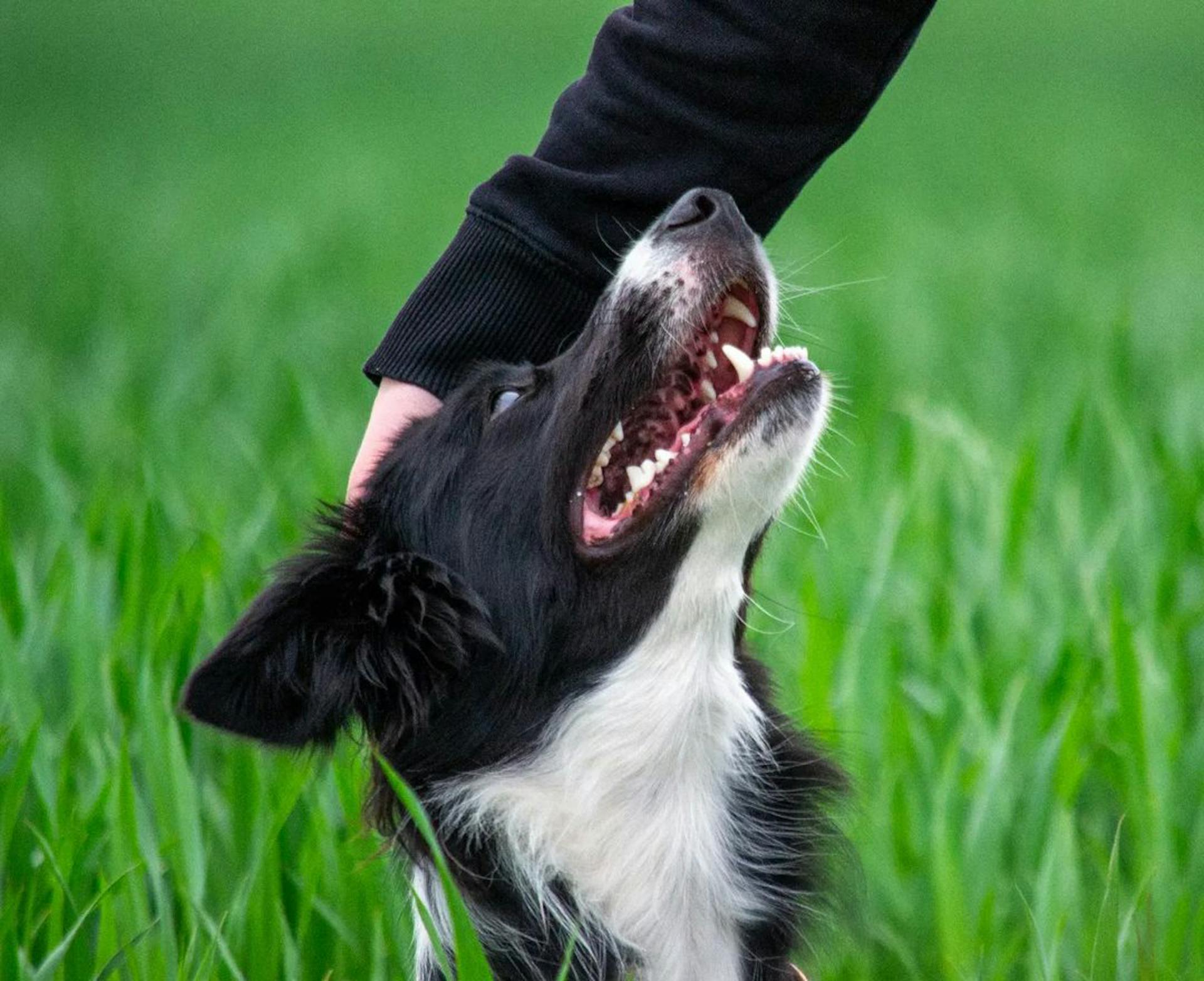
Service animals are protected under the Americans with Disabilities Act (ADA), which prohibits businesses from discriminating against individuals with disabilities.
The ADA defines a service animal as any dog that is individually trained to do work or perform tasks for a person with a disability. Emotional support animals, on the other hand, are not considered service animals under the ADA.
Businesses are required to allow service animals to accompany their owners in all areas of the business, including restaurants, hotels, and retail stores. This includes allowing service animals to accompany their owners in areas that are normally off-limits to pets, such as the kitchen or hotel room.
Broaden your view: Are Psychiatric Service Dogs Covered under the Ada
Service Animal Tasks and Responsibilities
Service animals are trained to perform a variety of tasks to assist individuals with disabilities. These tasks can be quite specific, as we'll see.
Guiding people who are blind or have low vision is a common task performed by service animals. They can also alert people who are deaf or hard of hearing.
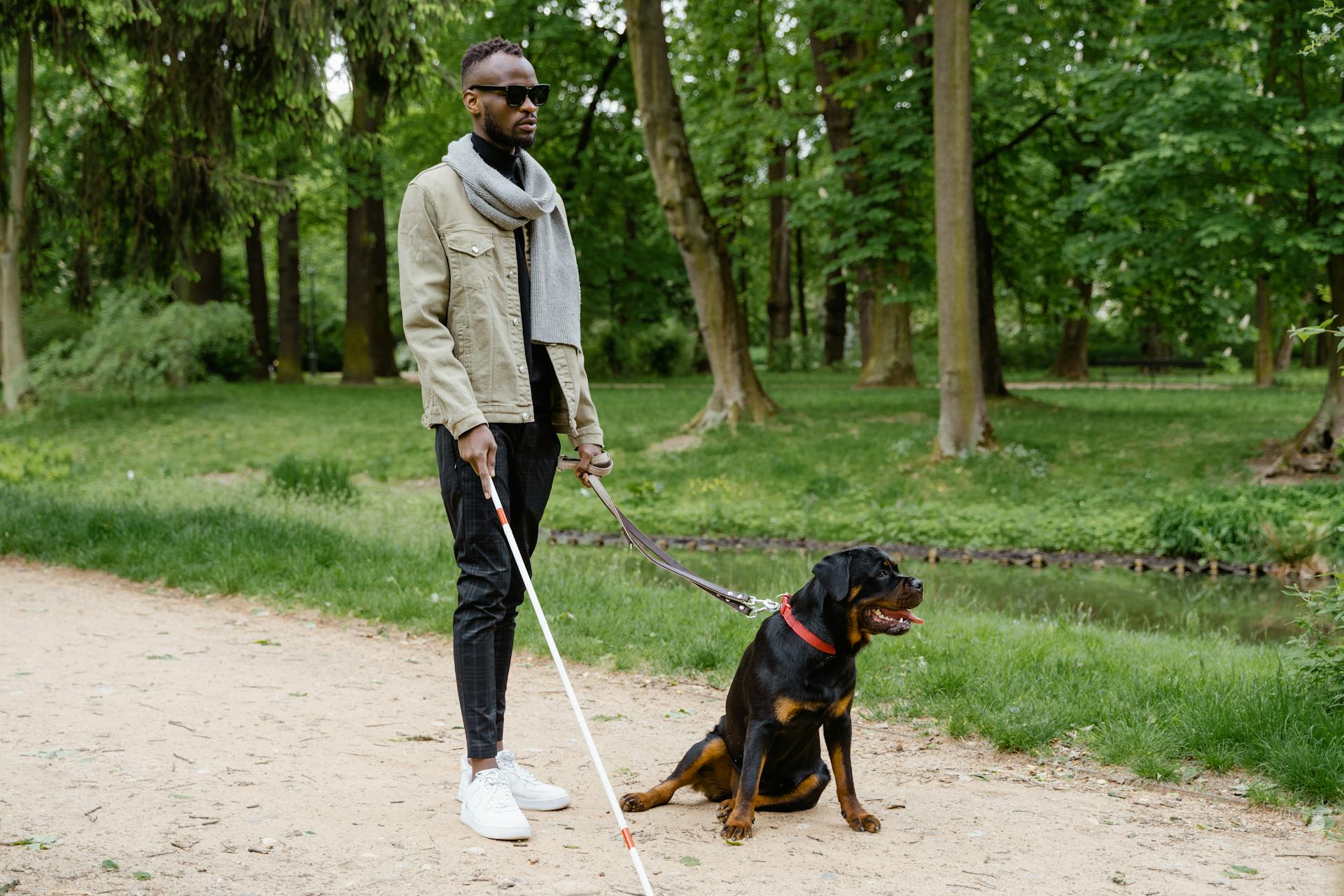
Service animals can be trained to provide non-violent protection or rescue work, which is a crucial task in certain situations. They can also pull a wheelchair, making it easier for individuals with mobility disabilities to get around.
Some service animals are trained to assist individuals during a seizure, while others are trained to alert individuals to the presence of allergens. They can even retrieve items for their owners.
In addition to these tasks, service animals can provide physical support and assistance with balance and stability to individuals with mobility disabilities. They can also help individuals with psychiatric or neurological disabilities by preventing or interrupting impulsive or destructive behaviors.
Here are some examples of service animal tasks:
- Guiding people who are blind or have low vision
- Alerting people who are deaf or hard of hearing
- Providing non-violent protection or rescue work
- Pulling a wheelchair
- Assisting an individual during a seizure
- Alerting individuals to the presence of allergens
- Retrieving items
- Providing physical support and assistance with balance and stability
- Helping individuals with psychiatric or neurological disabilities
- Reminding a person with mental illness to take prescribed medications
- Calming a person with PTSD during an anxiety attack
It's worth noting that crime deterrence, safety, or the provision of comfort or emotional support do not constitute "work or tasks" under the ADA.
Assistance Animals and Service Animals
The ADA says that only dogs can be "service animals", but what about assistance animals? The FHA uses the term "assistance animal" to describe animals that perform work, provide emotional support, or reduce symptoms of a disability. This can include any animal, not just dogs.
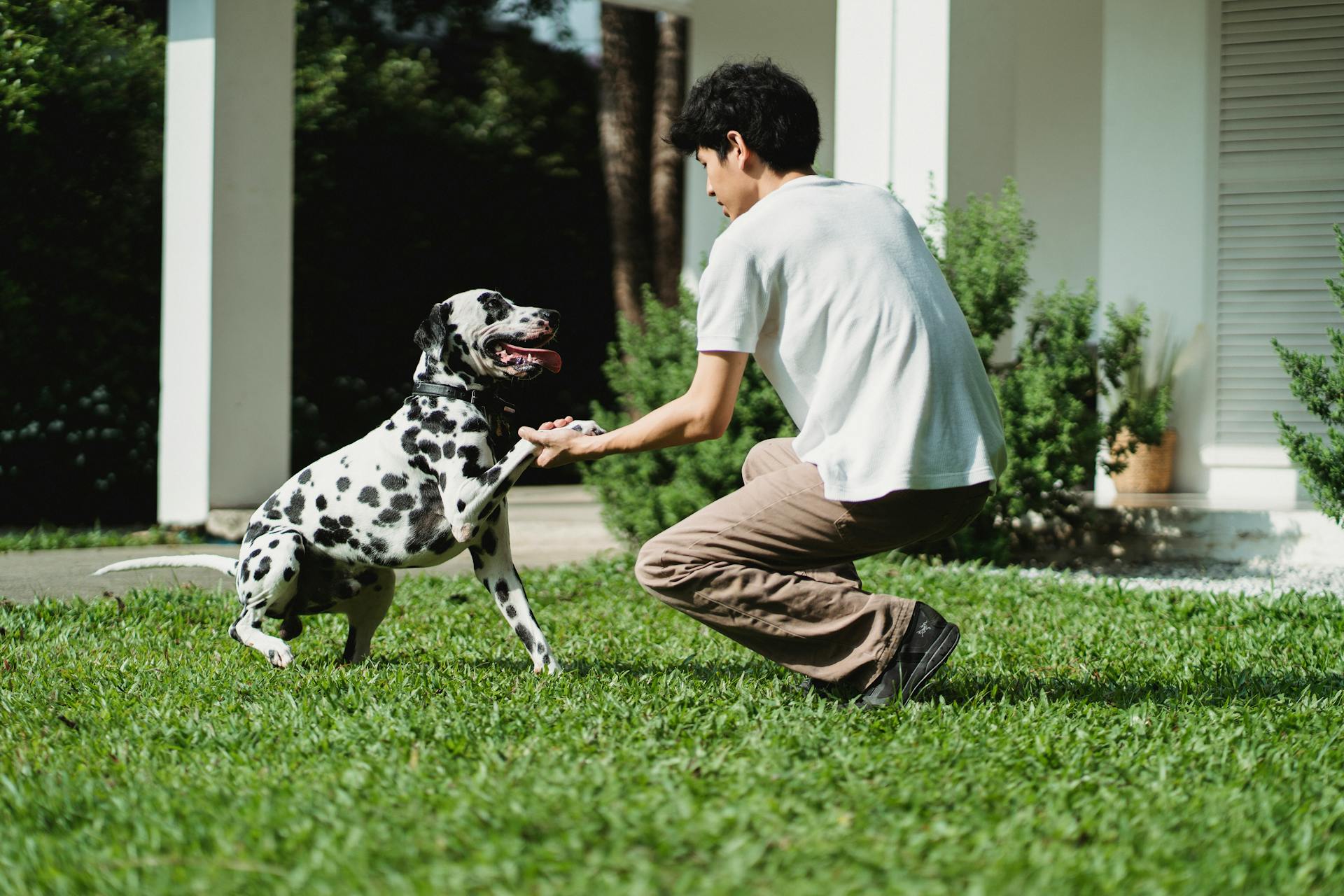
Under the FHA, assistance animals don't have to be specially trained. They just need to provide some kind of assistance to their owner. This can be as simple as alerting someone to impending symptoms or providing emotional support.
The ACAA has a broader definition of "service animal", which includes dogs and other animals. To identify a service animal, an airline can use animal identification cards, written documents, harnesses, or credible verbal assurances by the person with a disability.
Here's a comparison of the different types of animals covered by each law:
It's worth noting that service animals must be vaccinated according to state and local laws, but assistance animals do not have the same vaccination requirements.
Frequently Asked Questions
What is the most common service animal?
The most common service animal is a dog, which is widely trained to aid individuals with disabilities.
What breed Cannot be a service dog?
No breed of dog, including pit bulls, can be excluded from being a service animal due to breed-specific laws or fears. Service animals can be any breed of dog, regardless of local regulations.
Sources
- https://www.statesidelegal.org/service-animals-and-assistance-animals-what-are-my-rights
- https://www.ada.gov/resources/service-animals-2010-requirements/
- https://www.ada.gov/resources/service-animals-faqs/
- https://adata.org/service-animal-resource-hub/misconceptions
- https://disabilityrightsflorida.org/disability-topics/disability_topic_info/service_animals
Featured Images: pexels.com

